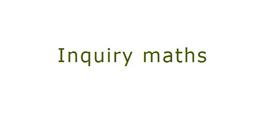NRICH Angles, Polygons and Geometrical Proof - Stage 4
This list supports teaching of angles, polygons and geometrical proof at Key Stage 4 in secondary mathematics. It provides investigations, problems and games from NRICH as well as classroom activities on the STEM Learning website that compliment them.
Here are some favourite activities selected by the NRICH team.
- Cyclic Quadrilaterals This activity presents students with a circle marked with 9 equally spaced points on the edge and one in the centre. The challenge is to draw as many triangles as possible and calculate the angles.
- Kite in a Square This activity involves finding the area of a kite that is constructed inside a square. Topics involved are coordinates, similar figures and Pythagoras' theorem.
These are just a few of the activities on angles, polygons and geometrical proof at Key Stage 4 that you can find on the NRICH curriculum pages.
The activities below, taken from the STEM Learning website, complement the NRICH activities above.
- ALL
- Teacher guidance
- Textbook
- Activity sheet
Teacher guidance
Square and Circle Inquiry
This investigation begins with the question whether a square fits better inside a circle or a circle within a square. More able students can progress to a similar problem with a hexagon and then other polygons. The teachers notes give an example of a possible solution.
Textbook
Kent Mathematics Project Level Eight
Book 8B has a section on Geometric Proof (pdf pages 239-248) which gives clear guidance on what is expected in a sufficient proof. Problems include the sum of interior angles of polygons and circle angles. Answers are given in this Kent Maths resource so that students can assess their own progress and seek guidance.
Kent Mathematics Project Level Six
Book 6b has a section dealing with circle angles, (from pdf page 87). Students are led through an investigation which includes proofs that the angle at the centre of a circle is twice the angle at the circumference. Answers to the questions are shown (from pdf page 91) and there are four further investigations (pdf page 90) involving circle angles.
Activity sheet
Geometry: Construction Proof
Geometry: Construction, Proof
This excel file presents a number of problems involving geometric proof. These begin with proofs requiring understanding of similar triangles and cyclic quadrilaterals. Students are also challenged to prove that the angle between tangent and chord is equal to the angle in the alternate segment. Later problems are much more challenging.
In each case the diagram is interactive and can help to illustrate the problem.





